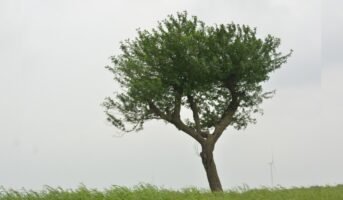
Source: Wallpaperflare.com
Sterculia Foetida, or Java Olive, is a tall and elegant tree originating in North Australia and East Africa and is the right addition to your flourishing garden.
Do you have the space and the environment around you to grow a tropical tree in your garden? If so, then the Sterculia Foetida is the right tree to make your backyard pop.
Beautiful flowers, noble and handsome structure, Sterculia Foetida, or Java Olive, as it is commonly known, may just be the tropical twist that your home needs. Here is all you need to know about the Sterculia Foetida tree: its growth, many benefits, and quirks of this most beautiful ornamental tree!
Common names of Sterculia Foetida
Sterculia Foetida is a very interesting scientific name, but it is quite a mouthful. Worry not, as many different common names know this tree. The Java Olive, Calumpang Tree, Hazel Sterculia, and Wild Almond Tree are used interchangeably.
What makes the Sterculia Foetida ideal for your backyard?

Source: Wikimedia
If you have the space and environment required to grow a tropical tree around your house, then Sterculia Foetida is a great pick. The tree has many unique characteristics that will elevate the beauty of your home. Let’s take a look at some of the features that make this ornamental tree a must-have for the garden/backyard!
- The tree has an attractive, umbrella-shaped form. It grows tall too. The tree has the potential to grow up to 40 meters (131 ft.); however, it rarely does so. Most specimens grow up to 20 meters (65 feet).
- The Java Olive grows straight. So, you don’t have to worry about it leaning over your property.
- Since it is a deciduous tree, it sheds most of its leaves in the winter, leaving crimson flowers behind its branches’ tips.
- The tree branches have a whorled (a pattern of spirals or concentric circles) appearance, and they gently curl upwards at their tips. This gives the plant a unique look.
- The flowers of the tree have a peculiar odour. Nevertheless, its beauty makes it a good choice for your backyard.
- The flowers are vivid and range from scarlet and crimson to pink and purple. It is a beautiful sight once the tree loses its leaves and leaves behind these beautiful flowers. They contrast so well on its smooth and grey bark.
Odor of Sterculia Foetida
As mentioned above, one of the unique quirks of this tree is the peculiar smell of its flowers. However, the odour is only prominent when the tree is in full bloom. Some species of the Sterculia species do have fragrant flowers.
Growing Sterculia Foetida in your garden
Sterculia Foetida seeds are required to be sown only when they are fresh. The seedlings of this tree grow quickly and produce long taproots. Therefore, they are required to be planted into their permanent place as quickly as possible. Physical inactivity caused by the hard seed coat of the mature seeds of many species in the Sterculia Foetida genus can be eliminated by scarifying the seeds. It can be done by cutting away or scraping some of the seed coat to enable water entry, though great care must be taken so that the seed embryo is not damaged. The aril covering the seed must be discarded. This can be done when the seeds are softened by soaking them in water. The seeds of Sterculia Foetida germinate optimally at 20 – 30°c. They can be sown in containers or nursery seedbeds. A germination rate of approximately 95% can be observed within 2 weeks if the seeds are taken proper care of.
Sterculia Foetida is native to tropical and sub-tropical Asia. However, it is a hardy tree and can grow within the temperature range of 16-38 C (60 – 100 F). When it comes to soil, this tree can be cultivated in a variety of soil types. It must be noted that the soil should be deep, fertile, and moist but well-drained. It prefers annual rainfall within the range of 1100-1800 mm. The tree is known to grow healthily with or without a clear dry season.
Unique benefits of having Sterculia Foetida in your backyard
- This tree attracts a lot of pollinators. The smell of the flowers and rich nectar within attracts bees to the point where they may just start building their hive on Sterculia Foetida.
- The tree produces an oily nut from its fruit. This nut can be eaten raw or roasted. It tastes pretty similar to peanuts. The nut also produces a bland, sweet-tasting oil akin to olive oil. It also shares the same beneficial properties as olive oil.
- The nutty, smelly Sterculia Foetida is known to attract birds from all over. The tree provides ample room for nesting and the nuts act as a source of food.
- The umbrella-shaped canopy of the tree can grow up to 12 meters (39 ft) wide. This makes it an ideal shade-bearing tree. Great for outdoor picnics with the family – when the tree is not in full bloom, though!
Medicinal properties of Sterculia Foetida
Sterculia Foetida has been used traditionally as a medicine for its wound healing, antimicrobial, antidiabetic, antioxidant, antimicrobial and antiinflammatory properties. However, scientific studies on its medicinal properties are limited and its potential health benefits are not medically proven.
Uses of Sterculia Foetida in agriculture
This tree is grown world-wide because of its commercial use. While the many parts of the tree are used in traditional medicine, its wood is used as timbre. The tree is also used in agroforestry systems, where it is planted alongside crops to provide shade and protect the soil from erosion.
FAQs
Is Sterculia Foetida Dioecious?
Yes, this tree is Dioecious. This means that the male and female flowers are present on separate trees. Therefore, to produce viable seeds, both forms must be grown.
Is this a high-maintenance tree?
The Java Olive is a relatively low-maintenance tree. However, the tree does shed a lot of leaves, and the bark is known to slough off over the year in some cases. So, most of the maintenance that needs to be done is for clearing the tree's shedding.
Is any part of the tree toxic in any way?
Not really. If the nuts of this tree are eaten unroasted and in large quantities, it is known to have a purgative effect.
Are seeds of Sterculia Foetida edible?
The seeds of Sterculia Foetida are edible but can be purgative and hence must be roasted before consumption.
Who described the Sterculia Foetida species?
The Sterculia Foetida species was described by Carl Linnaeus in 1753.
Housing News Desk is the news desk of leading online real estate portal, Housing.com. Housing News Desk focuses on a variety of topics such as real estate laws, taxes, current news, property trends, home loans, rentals, décor, green homes, home improvement, etc. The main objective of the news desk, is to cover the real estate sector from the perspective of providing information that is useful to the end-user.
Facebook: https://www.facebook.com/housing.com/
Twitter: https://twitter.com/Housing
Email: [email protected]











